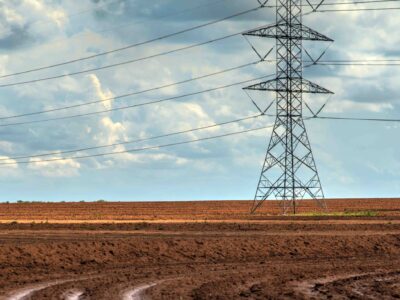“Who’s going to pay for that?” Those hesitant about new, eco-friendly economic policies often raise this question, especially when it comes to transitioning off the fossil fuel standard. With more innovation in renewable energy generation, there has been substantial research on the cost of making this transition. A study led by Stanford University professor Mark Jacobson gives a picture of how a developed nation can switch to entirely renewable electricity sources and how much it would cost.
Jacobson reported the findings in an op-ed for The Hill. Analyzing carbon dioxide emissions from 145 countries that produce 99.7% of the world’s emissions, the study formulated the theory that a developed nation like the U.S. wouldn’t need some miracle to successfully switch to renewable energy without destroying its economy. “We found that the new system may require less energy, cost less, and creates more jobs than the current system,” he commented. The solution is already in place to a degree, with infrastructures like onshore and offshore wind farms, solar panel farms, hydroelectric dams, tidal power plants, and geothermal electricity.
The research group argues in the study that the country needs more of these generators, and long-duration battery storage would be necessary to ensure nobody is left in the dark. The authors contend that if battery prices were 50% higher, long-duration storage would only raise electricity prices by 3.2% more than their base estimate. This battery storage system would allow for more accessible electricity and can generate electricity for longer periods.
The study found that a developed nation like the U.S. would have to pay somewhere close to $62 trillion to transition off fossil fuels and revamp the entire electrical grid to renewables. While that seems like an insurmountable sum, the study concluded that a country could save an annual $11 trillion due to switching to cheaper, more efficient energy sources like wind and solar. Theoretically, a renewable energy grid could pay for itself in just six years. Likewise, the technology already exists to make this transition.
The research found other effects of switching to renewable energy may include a net increase in long-term employment opportunities globally, with 28.4 million direct and indirect jobs.
These can include maintenance, supervisory roles, construction, and consultancy. The researchers also found electric vehicle charging speed would greatly improve and become less expensive.
Stanford was not the only institution to research the cost-benefit ratio of switching the U.S. to renewable electricity. The National Oceanic and Atmospheric Administration (NOAA) conducted a study in 2016 with similar findings. However, its data came from studying weather patterns and how wind and hydroelectricity could work to power more than just a region of the country. The study found that the U.S. could switch to entirely renewable energy sources but differed from Stanford’s in regards to long-duration battery storage. NOAA suggested a breakthrough in battery storage wasn’t needed to compete with the costs of traditional energy sources.
One theme of NOAA’s study was that the larger the geographic area, the more effective solar and wind could compete with other energy sources. “Just take the state of Kansas. If it’s not blowing on one side of Kansas, it’s probably not blowing on the other. However, if you take the whole 48 states, you can always find places where it is pretty windy, so that’s essentially what the study showed us,” said Alexander MacDonald, study coauthor and former NOAA meteorologist.
A nationalized renewable energy grid is unlikely to be established in the U.S. due to the varying electricity needs of specific regions. However, it’s not impossible to think power companies could collaborate to create a more multi-regional energy system without displacing citizens for projects like fracking or oil drilling.
While an idea like the Stanford study’s economic plan to switch to renewables seems beneficial, it will take a few years before we can see it fully implemented. However, with the federal government hoping to reach carbon neutrality and taking measures to incentivize adopting renewable energy, this Stanford strategy is something to ponder.





